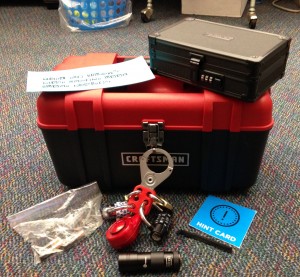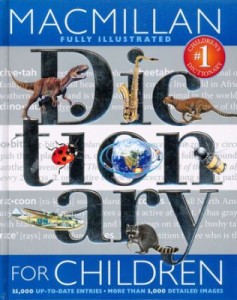Have you ever heard of an escape room? It is a game in which a group of people must find clues and solve problems to escape from a locked room. Participants must use critical thinking and teamwork to solve problems that allow the group to escape. Breakout EDU is an educational version of  the escape room. Students use critical thinking, teamwork, and problem-solving to unlock a box that has multiple locks on it. Miss Spinney’s sixth graders participated in their second Breakout game this week. The academic focus of the game was Big6 (research) skills. The students had 45 minutes to find all the clues, solve the puzzles, figure out the codes, and unlock the locks. They had to unlock a 3-digit number lock, a 4-digit number lock, a word lock, a directional lock, and 2 padlocks! Here are the skills involved in the task:
the escape room. Students use critical thinking, teamwork, and problem-solving to unlock a box that has multiple locks on it. Miss Spinney’s sixth graders participated in their second Breakout game this week. The academic focus of the game was Big6 (research) skills. The students had 45 minutes to find all the clues, solve the puzzles, figure out the codes, and unlock the locks. They had to unlock a 3-digit number lock, a 4-digit number lock, a word lock, a directional lock, and 2 padlocks! Here are the skills involved in the task:
- Locate the call number for books in the online catalog and access the books on the shelf.
- Identify primary sources.
- Sequence the steps of the research process.
- Answer questions about different sources (dictionary, thesaurus, encyclopedia).
- Identify the correct next step in various scenarios.
The students almost unlocked the box, but they were missing one clue. Maybe next time!






